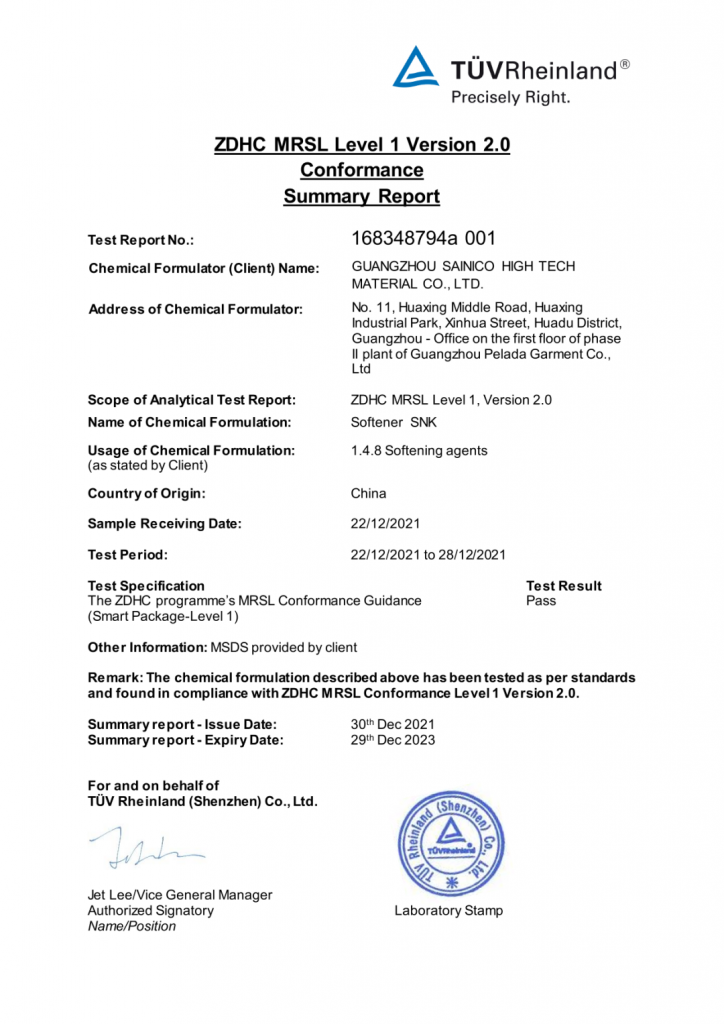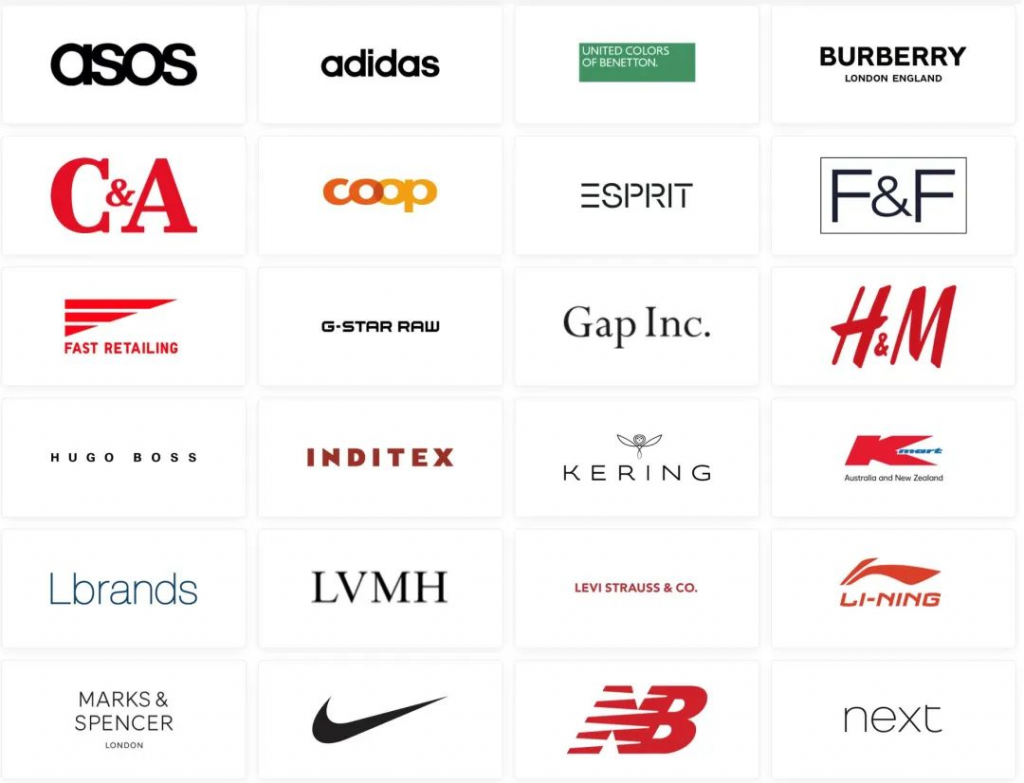With the continuous improvement of people’s living standards, there has been a growing focus on personal health. In order to highlight the health attributes of their products, major clothing brands have also introduced various health and environmental certifications. Today, we will be talking about the ZDHC certification.
The full name of ZDHC is “Zero Discharge of Hazardous Chemicals,” which means “zero discharge of hazardous chemicals.” This certification is supported by a group of apparel brands and retailers, including adidas, BENETTON, BURBERRY, C&A, ESPRIT, G-STAR RAW, GAP, H&M, INDITEX, Jack Wolfskin, LEVI’S, Lbrands, LI-NING, M&S, NB, NIKE, PUMA, PVH, and others.
The Chem-MAP program, aimed at chemical manufacturers, enables chemical companies to obtain ZDHC certification at different levels: Level 0, Level 1, Level 2, and Level 3. This program helps chemical manufacturers ensure that their products meet ZDHC’s stringent standards for hazardous chemicals, thus contributing to the overall goal of zero discharge of hazardous chemicals in the apparel and footwear supply chain.
Level 0 :Suppliers’ declarations, without third-party ZDHC-approved verification, may not meet the minimum confidence level required to comply with the ZDHC MRSL (Manufacturing Restricted Substances List) standards. For ZDHC certification, it is essential that suppliers undergo an authorized third-party audit to ensure their compliance with the ZDHC MRSL requirements and to demonstrate their commitment to eliminating hazardous chemicals in their manufacturing processes. This helps ensure transparency and accountability in the supply chain.
Level 1:Conduct third-party review of documents or analysis reports to determine the compliance of ZDHCMRSL
Level 2:Conduct a review of the product management of chemical suppliers by a third-party certification body
Level 3:All elements required for MRSL compliance level 2 must be in place, while also conducting an on-site inspection of the chemical suppliers to assess their product management
Why should we need ZDHC?
The supply chains of clothing and footwear extensively use chemicals in textiles, which can lead to macro-level issues (such as salts, dye residues, and waxes produced by natural fibers) and micro-level issues (such as trace heavy metals and APEO compounds—alkylphenol ethoxylates). Poor chemical management may damage the environment and affect human health (both workers and consumers). Governments are intensifying regulatory efforts, and non-governmental organizations are actively addressing this issue.
Given the above reasons, it is imperative to implement proper chemical management, improve the safety of chemicals, and enhance the efficient use of water and energy.






